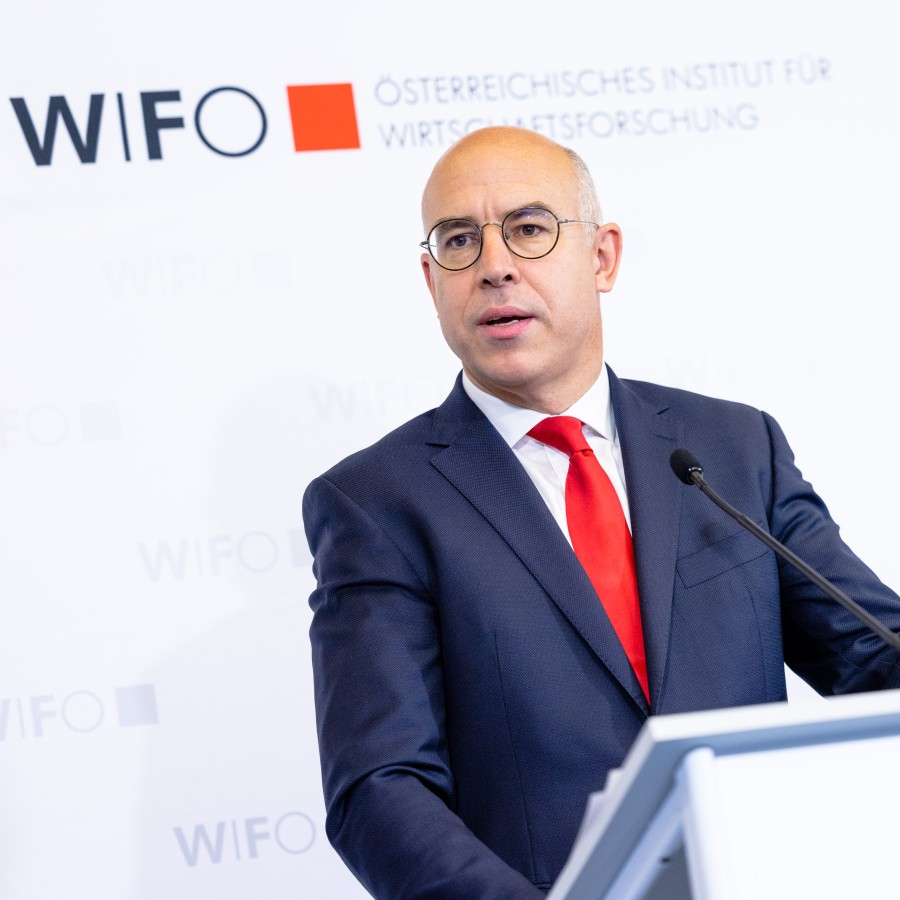"While the recent price drops on international energy markets are supporting economic activity, core inflation remains more stubborn than expected. This is prompting central banks to tighten monetary policy more significantly, making the approaching economic upswing subdued," says Marcus Scheiblecker, the author of the current WIFO Economic Outlook.
The international economic downturn, which unfolded in the second half of 2022 and has also affected the Austrian economy, will continue to dampen GDP growth in the first half of 2023. Around the middle of the year, the economy is forecasted to regain momentum, both in the euro area and in Austria.
Due to the significant easing of prices on the energy markets, business and household sentiment has brightened somewhat. However, domestic tariffs for household energy and thus inflation will abate with some delay.
International economic activity has not gained momentum since the last WIFO Economic Outlook in December 2022. In the euro area, the downturn observed in the second half of 2022 continued after the turn of the year. While world market prices for energy commodities are falling, significantly higher interest rates – as a result of a more restrictive monetary policy – are dampening economic expectations.
Atypical for the current stage of the economy is the robustness of the labour markets in the USA and Europe. In both regions, despite weaker economic output, employment momentum has slowed only slightly, keeping unemployment at a low level so far. This, along with the gradual return of business and household confidence, points to a pick-up in the international business cycle from mid-2023 onwards. In industry, order books have recently stabilised in some countries, so that industrial production will pick up momentum in the near future.
In this environment, the domestic economy will also be able to regain its footing from the second half of the year onwards and expand production. For 2023 as a whole, however, only weak GDP growth of 0.3 percent in real terms is forecasted. Growth will accelerate to 1.8 percent in 2024.
The export-driven economic recovery is expected to spill over into many areas of the domestic economy. The construction industry, however, will not profit from this positive development. There, high price increases and the more difficult financing environment are causing demand to shrink further, especially in residential construction. WIFO therefore expects a further decline in construction investments in 2023 (–0.8 percent, real), which will even accelerate somewhat in 2024 (–1.4 percent).
Tourism, which had suffered particularly from the COVID-19 pandemic, recovered strongly in 2022. The recovery will continue in 2023, but at a slower pace. Demand from abroad should have a supporting effect, while that from the locals is likely to fall slightly due to high inflation, which is depressing household incomes in real terms. For 2024, WIFO expects a further revival in tourism demand. While demand from abroad will hardly further increase in 2024, domestic demand should expand more strongly due to declining inflation.
Despite the significant decline in import prices for energy commodities, consumer prices will continue to rise strongly in 2023 – driven by core inflation. For the year as a whole, WIFO expects the CPI to rise by 7.1 percent. As prices for consumer goods usually react with a time lag, a noticeable slowdown of the general upward price trend should set in from the second half of 2023. In 2024, consumer price inflation is forecasted to drop to 3.8 percent.
In line with the weaker business cycle, employment will grow by 0.8 percent in 2023 (+1.3 percent in 2024). Unemployment is expected to rise by 6,000 persons in 2023 and to resume its downward trend in 2024 (–10,000 persons). Correspondingly, the unemployment rate (according to national calculations) will rise from 6.3 percent (2022) to 6.4 percent (2023) and should fall to 6.1 percent in 2024. This would put it at its lowest level since 2008.
In 2023, persistently high inflation again leads to a significant increase in tax revenues, especially from value-added tax.
As a result, total government revenue grows almost as strongly as nominal GDP, consequently, the revenue-to-GDP ratio falls
only slightly. Expenditure, however, does not increase at the same rate. As a result, the budget deficit falls to 1.8 percent
of nominal GDP in 2023 (2022 –2.5 percent). A further decline to 0.4 percent of GDP is forecasted for 2024.


